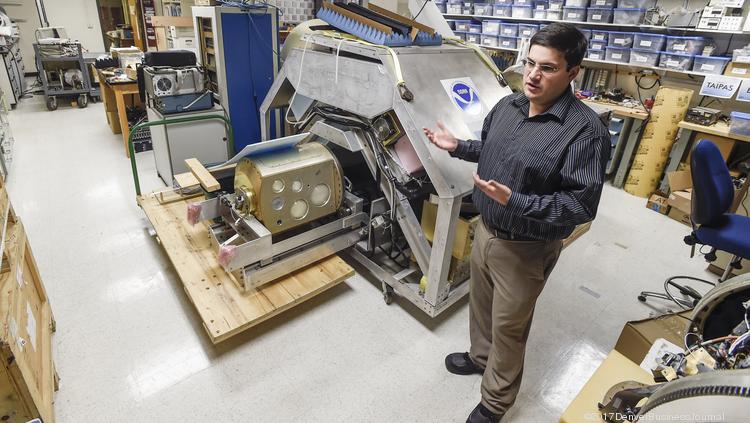Latest News

Orbital Micro Systems’ Michael Hurowitz at the University of Colorado Boulder lab, where the company’s weather satellite instruments are developed. Photo: Denver Business Journal
Historically, the motivation behind scientific discovery has been the romanticism of research, and discovery, problem solving. It was — and remains — a noble calling, which at its core relies on elements of intelligence, creativity, expertise, courage, and tenacity.
When the outcomes of these initiatives are successful, the results are game-changing. And even when scientific discovery and experimentation fails — which is usually the case — the community still has the opportunity to learn from any missteps and has the opportunity to get it right the next time. Yet for many researchers, the scientific approach to problem solving isn’t necessarily about reaching an outcome. It can be about the journey of discovery, and the processes that are followed. Getting published is the brass ring for most scientists, and if their research serves a commercial or human need, it is always welcomed — but it is not a requirement.
While the purity of research is always an admirable objective, there doesn’t need to be a wall between science and commercial endeavors. They can—and should—be aligned to derive as much value as possible.
This was exactly the paradigm that drove much of the research and discovery effort in earth observation technology — most notably, design innovation for the collection of high-resolution data. The scientists started with a premise that they wanted to prove — but did not necessarily align with commercial objectives. Which is problematic in today’s economic reality, considering the sheer billions of dollars required for space exploration missions. Unfortunately, the days of the limitless budgets from government grants are long gone. The current mindset of the governments and corporations that foot these exorbitant bills isn’t based on altruism, it’s on achieving results that have a direct, provable impact on a societal or commercial need. In their view, science is a means to an end. And this isn’t necessarily a bad thing.
Turning Science on its Head
The demand for fiscal accountability in space technology has forced those responsible for innovation to re-evaluate how we approach our craft. We are now challenged to carefully evaluate the problems in the marketplace, and use our resources and experience to create solutions that address these problems. For most scientists and engineers, it has changed the nature of problem solving. It’s no longer a pre-requisite to begin the process with discovery and experimentation. It’s just as valid to start at the end. This means we determine what outcomes we want to reach, and reverse engineer the entire discovery process — including research, trials, tests, and evaluation — to meet our objectives.
This concept becomes even more pronounced when building hardware, like sensors and other equipment. The goal is to begin with the performance levels that customers want to achieve, and then work backwards to put systems and processes into place to deliver solutions that are relevant to the market.
How does this work in the practical world? In my experience, it has had a transformational effect. While we as an industry design and build hardware, manage satellite launches, and build incredibly complex systems to calculate and coordinate this ballet of hardware and software, we also understand that customers don’t get too excited about design and manufacture, or the stringent testing and re-testing we must administer to make sure everything works properly. Yes, these elements are important and necessary, and customers absolutely demand that everything work properly, but still, it isn’t what motivates them. They are much more interested in the results, not the process.
Delivering highly complex technology, like a best-of-breed weather information solution, requires building entire space satellite systems and data science technology from the ground up — but it has to be built with the end user in mind. This is the proven route to satisfying market needs — rather than building a product and then looking for a customer that might be able to use it.
The End Game
It takes a different mindset on the part of the institution and individual to start from the end, but it takes no less intelligence, passion, or experience compared to the more traditional approach. The science is profound, the effort is intense, and the voyage to get there is exhilarating. The ultimate destination may be different — gaining endorsement from a marketplace instead of peers — but it is no less gratifying to see one’s efforts positively impact whole communities, industries, and cultures.
 Michael Hurowitz is the Co-Founder, Chief Technology Officer (CTO), and Senior Vice President of Engineering at Orbital Micro Systems. More at www.orbitalmicro.com.
Michael Hurowitz is the Co-Founder, Chief Technology Officer (CTO), and Senior Vice President of Engineering at Orbital Micro Systems. More at www.orbitalmicro.com.
Get the latest Via Satellite news!
Subscribe Now